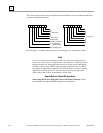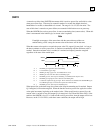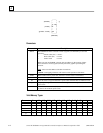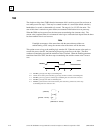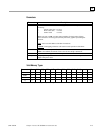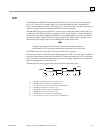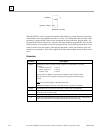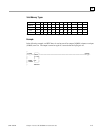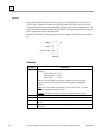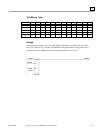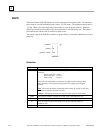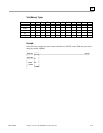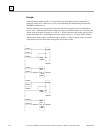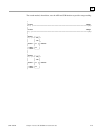
4-18 Series 90-30/20/Micro Programmable Controllers Reference Manual – September 1998 GFK-0467K
4
_____
| |
(enable) —|OFDT |— Q
| |
| time|
| |
| |
| |
(preset value) —|PV |
|_____|
(address—3 words)
When the OFDT is used in a program block that is not called every sweep, the timer accumulates
time between calls to the program block unless it is reset. This means that it functions like a timer
operating in a program with a much slower sweep than the timer in the main program block. For
program blocks that are inactive for a long time, the timer should be programmed to allow for this
catch-up feature. For example, if a timer in a program block is reset and the program block is not
called (is inactive) for four minutes, when the program block is called, four minutes of time will
already have accumulated. This time is applied to the timer when enabled, unless the timer is first
reset.
Parameters:
Parameter Description
address The OFDT uses three consecutive words (registers) of %R memory to store the
following:
• Current value (CV) = word 1.
• Preset value (PV) = word 2.
• Control word = word 3.
When you enter an OFDT, you must enter an address for the location of these
three consecutive words (registers) directly below the graphic representing the
function.
Note: Do not use this address with other instructions.
Caution: Overlapping references will result in erratic operation of the timer.
enable When enable receives power flow, the timer’s current value is incremented.
time
Time increment is in tenths (0.1), hundredths (0.01), or thousandths (0.001) of seconds for
the low bit of the PV preset value.
PV PV is the value to copy into the timer’s preset value when the timer is enabled or reset.
Q Output Q is energized when the current value is less than the preset value. The Q state is
retentive on power failure; no automatic initialization occurs at power-up.



